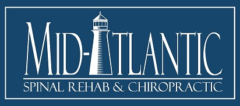Medical Co-Management in Baltimore Whiplash Treatment As a Baltimore Chiropractor that routinely treats acutely injured patients with whiplash, headaches, neck pain, and back pain following Baltimore auto accidents, I have seen plenty of patients that have delayed beginning chiropractic care/rehabilitation because they wanted to get some medicine for their pain. Typically a patient would schedule an appointment with their primary care provider, go to an urgent care, or go to the Emergency Room. There are
Effective Management of Baltimore Whiplash As I write this blog post it occurs to me that it’s been nearly 2 years since I left Las Vegas to move to Baltimore to open my own Chiropractic practice that focuses on treating patients involved in auto accidents, whiplash, motor vehicle collisions, and other forms of personal injury. One of the most important things I learned while working in Las Vegas was the effective evidence-based management of whiplash
Immobilization Following Whiplash in Baltimore As a Chiropractor that treats patients with neck pain following Whiplash in Baltimore, I routinely see patients referred to me from medical doctors that come in wearing a cervical spine collar (soft neck collar). Many of these patients have already had radiographs taken (x-rays) which have been cleared and are negative for fracture or dislocation. Those patients sometimes continue to wear the soft collar due to medical advice and sometimes
Shoulder Injuries due to Baltimore Car Accidents As a Baltimore Chiropractor that treats many patients involved in Baltimore car accidents, many people may think that I focus my examination and treatment purely on the spine. I suppose if I were not a Chiropractor I’d think the same thing. But this isn’t true. As a treating provider for these patients it is my obligation to diagnose and treat all musculoskeletal complaints causally related to the car
Auto Accidents in Baltimore and Washington D.C. In an attempt to bring the discussion of safe driving to the forefront, AllState recently published its results for the safest (and least safe) cities to drive in the U.S. Once again at the bottom of the list are Baltimore, MD and Washington D.C. AllState ranked the top 200 cities in the U.S. by population and looked at the number of non-fatal auto accidents per capita in a

